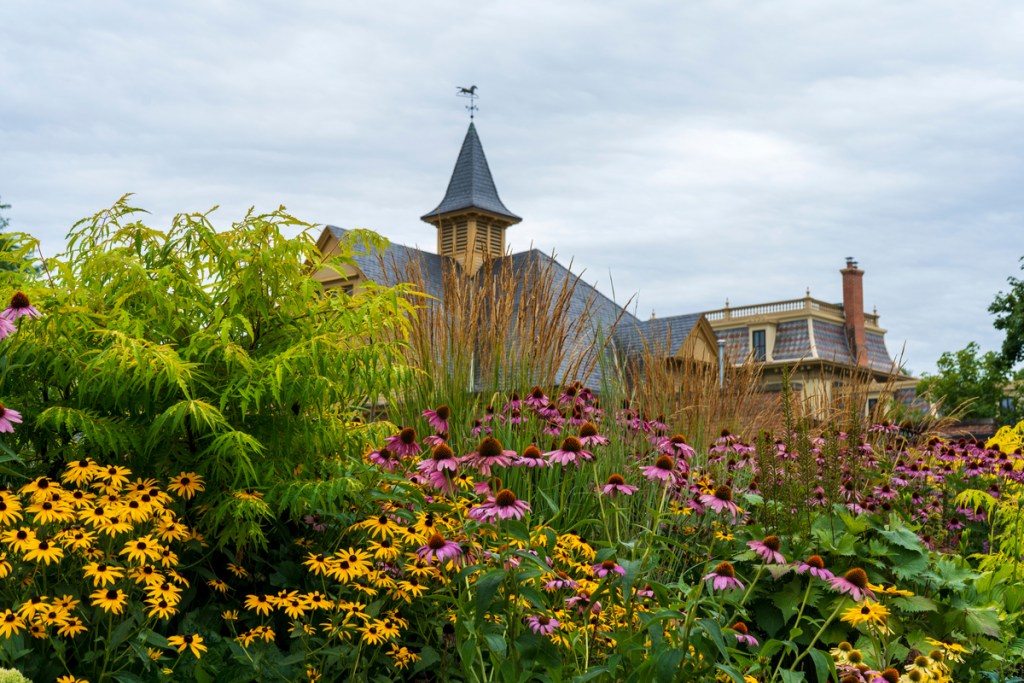The idea of green gardening is probably a no-brainer. After all, plants are inherently part of the natural world. The mere act of caring for plants in a garden is in itself eco-friendly. But there are lots of ways that we can make our gardens even greener by observing nature and working to incorporate and replicate natural processes in our activities. We can also reduce the amount of stuff we buy or the amount of stuff we throw away. Our gardens can become havens for threatened species or help to preserve genetic diversity. Read on to learn more ways that you can grow a greener garden.
Use what you have
Like other hobbies, gardening offers an endless number of tools, plants, supplies, and decor that we can purchase. Often, though, we have a solution, or part of it, at our fingertips. Homemade compost is an example of using what you have. Garden debris, vegetable scraps, weeds, coffee grounds, fallen leaves, and other vegetative waste can easily become a nutrient-rich soil amendment. No matter the type of gardening you do, homemade compost can help reduce the cost of soil and fertilizer, and travel time to the store.
Seed saving is another way to use what you have. Instead of relying on store-bought seeds each year, you can grow your own. Seed saving ensures that you have a steady supply of the best and freshest garden seeds. You’ll have confidence that they were selected for best performance in your garden.
Water harvesting, where allowed, lowers home water expenses and helps the environment. Simply set up a tank system to capture rainfall from the roof of your house, garage, or outbuildings. Start small with a rain barrel, or go big with a cistern. Using harvested water rather than municipal water can reduce irrigation costs by hundreds of dollars per year. It also reduces storm runoff from your property, which in many urban and suburban areas is a major cause of stream degradation.
Plant a diverse collection of native plants
Locally native plants are well adapted to the climate and soil types in your area. They evolved over thousands of years to survive in the temperature extremes and rain patterns typical to the local climate. This means that they generally require less care and endure fewer pest problems than plants with origins elsewhere.
Consider protecting rare or threatened species from the region by including them in your garden. Doing so helps to preserve species diversity in multiple ways. In addition to the threatened plant species itself, you also provide habitat for the species that depend on it for their own survival. If you plant native milkweed, the milkweed gets to grow on and you may be visited by Monarch butterflies that require milkweed as a host plant to raise their young.
Welcome wildlife
A big part of working with nature involves welcoming wildlife into the garden at both the macro and micro level. Many beneficial garden creatures like worms and toads are large and visible to the naked eye. Many more are nearly invisible, unless you know where to look. Healthy soil contains thousands of microbes that interact with one another and with plant roots to create an entire ecosystem. Use of compost, organic mulch, and organic fertilizer helps to maintain a healthy soil ecosystem.
A healthy soil ecosystem becomes the basis for a resilient garden ecosystem. Worms carry organic material from the surface deep down into the root zone where bacteria and fungi make nutrients available to plants. An amazing array of insects create a web that includes pollinators and other plant consumers as well as predators. Birds visit the area to feast on insects, worms, fruits, and seeds. Other animals, like spiders, toads, snakes, opossums, and bats eventually find their way through the area, adding to the overall diversity and interconnectedness of the garden.
Use appropriate pest controls
Occasionally pests pressure the garden more than it may be able to withstand. When control measures become a necessity, what will cause the least amount of damage and disruption? Physical barriers, like breathable row covers, can keep bugs out, such as squash vine borer moths or ladybugs that were intentionally placed to control aphids. Organic pesticides feature low toxicity and short persistence, but they must be timed properly to kill only targeted pests.
Green gardening practices benefit edibles, ornamentals, and general landscaping by building a robust, diverse ecosystem that resists damage caused by stress. Working toward a greener garden is a way to steward the processes of nature in a way that is both beautiful and sustainable. An eco-friendly garden is great for the environment, and can save you time and money.





